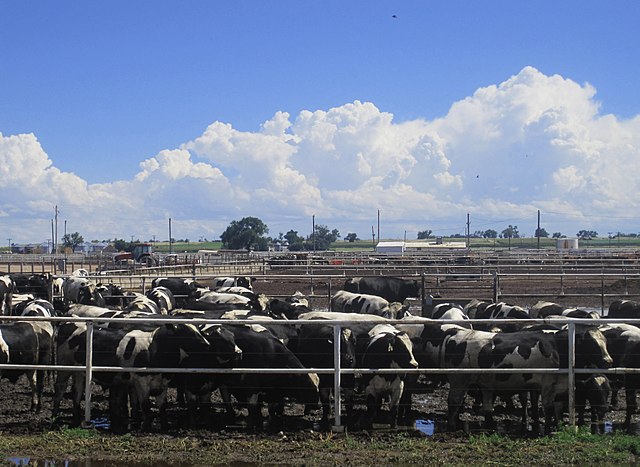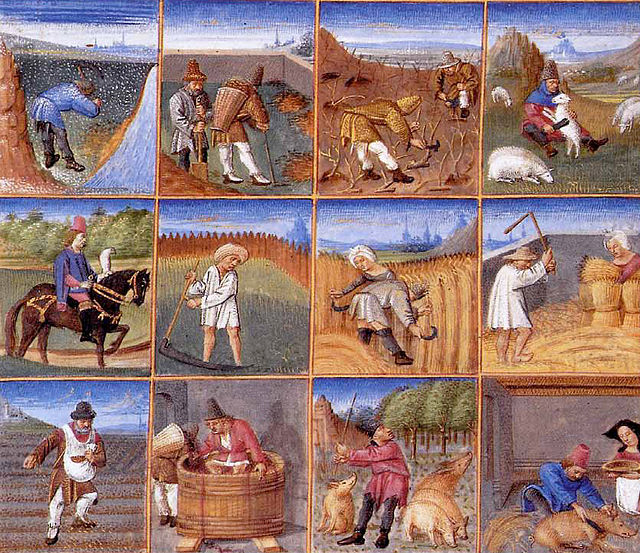Animal husbandry is the branch of agriculture concerned with animals that are raised for meat, fibre, milk, or other products. It includes day-to-day care, management, production, nutrition, selective breeding, and the raising of livestock. Husbandry has a long history, starting with the Neolithic Revolution when animals were first domesticated, from around 13,000 BC onwards, predating farming of the first crops. By the time of early civilisations such as ancient Egypt, cattle, sheep, goats, and pigs were being raised on farms.
Cattle feedlot in Colorado, United States
The domestication of ruminants, like these fat-tailed sheep in Afghanistan, provided nomads across the Middle East and central Asia with a reliable source of food.
Milking cattle in ancient Egypt
Shepherd with sheep in woven hurdle pen. Medieval France. 15th century, Bodleian Library, MS Douce 195
Agriculture encompasses crop and livestock production, aquaculture, fisheries, and forestry for food and non-food products. Agriculture was the key development in the rise of sedentary human civilization, whereby farming of domesticated species created food surpluses that enabled people to live in cities. While humans started gathering grains at least 105,000 years ago, nascent farmers only began planting them around 11,500 years ago. Sheep, goats, pigs, and cattle were domesticated around 10,000 years ago. Plants were independently cultivated in at least 11 regions of the world. In the 20th century, industrial agriculture based on large-scale monocultures came to dominate agricultural output.
Winnowing grain in Ethiopia.
Centres of origin, as numbered by Nikolai Vavilov in the 1930s. Area 3 is no longer recognised as a centre of origin New Guinea (area P) was identified more recently.
Agricultural scenes of threshing, a grain store, harvesting with sickles, digging, tree-cutting and ploughing from ancient Egypt. Tomb of Nakht, 15th century BC
Agricultural calendar, c. 1470, from a manuscript of Pietro de Crescenzi








